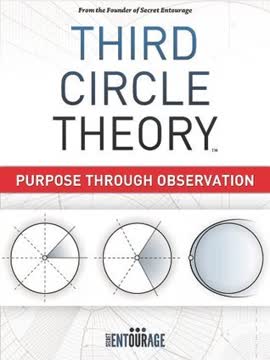Key Takeaways
1. Life progresses through Three Circles of awareness.
Everyone goes through the First Circle, some will evolve to the Second Circle, and very few progress to the Third Circle, which is the stage that allows the definition of your existence.
A systematic journey. The Third Circle Theory outlines human evolution through three distinct stages or "Circles," each representing a different world, perspective, vision, and cycle of the mind. This progression isn't linear or guaranteed, but everyone begins in the First Circle.
Beyond self-help. Unlike traditional self-help focused on making money, this theory aims to elevate understanding of purpose and self-discovery through observation and helping others. It defines the difference between those who merely accumulate wealth and those who become innovators and icons.
Finding your purpose. The ultimate goal is to reach the Third Circle, the stage where individuals define their existence and experience boundless energy fueled by purpose. This journey requires navigating the attributes within each circle and consciously choosing to evolve.
2. The First Circle is shaped by environment and self-focus.
As a child, the world revolves around you, which is the significance of the diagram’s center dot.
Born into circumstance. The First Circle is the foundation, determined by the environment you are born into. Early values, beliefs, and behaviors are absorbed from parents and surroundings, limiting your initial perspective and aspirations to what you are exposed to.
Stages of the First Circle:
- The Birth: Product of environment, limited perspective.
- The Settler: Complacent, satisfied with minimal achievement, routine-bound.
- The Dreamer: Mid-life crisis stage, seeking quick answers and instant gratification, easily manipulated.
Self-centered world. In this circle, life revolves around "you" – your work, relationships, money, and feelings. Most people never graduate from this stage, remaining followers who lack self-confidence and a clear sense of what they want to do.
3. Overcoming fear and building confidence are crucial First Circle steps.
Confidence ultimately comes from experience, exposure, and your ability to look beyond your fears of the unknown.
Fear's paralyzing grip. Fear is the strongest emotion, often contributing to others and preventing action. Observed from a young age, fear of rejection and fear of failure keep people from taking risks, pursuing opportunities, or starting businesses.
Information conquers fear. The unknown drives fear. Gaining information about a situation or topic eliminates the unknown, building confidence. Like a doctor knowing a rash isn't deadly, knowledge removes panic and enables action.
Practice builds confidence. Confidence is built through experience and practice. Repeatedly facing fears, like public speaking or interacting with others, turns the unknown into routine. This practice strengthens self-belief and reduces the power of fear over your actions.
4. Your entourage and perception of time shape your potential.
Your entourage presents the solution for leveraging yourself out of your fears.
Entourage influence. As you set goals and evolve, your current friends may no longer align with your aspirations, leading you to seek a new entourage. Surrounding yourself with successful, like-minded individuals with a "can do" attitude helps redefine your beliefs and possibilities.
Time's true value. Time is often taken for granted, unlike money. How you value money, often learned from your environment, dictates your understanding of time's worth. Trading time for immediate income (First Circle) differs from leveraging time for long-term growth and value creation (Second/Third Circle).
Investing your time. Time is a precious resource that runs out. Choosing how to invest your time, aligning it with long-term goals, is crucial. Wasting time on unproductive activities, even leisure, has a cost. Recognizing this investment mindset is key to progression.
5. The Second Circle is about awakening, achievement, and leadership.
The Second Circle reflects The Awakening, The Leader, and The Achiever.
Increased awareness. About 20% of people reach the Second Circle, marked by an awakening to alternative realities and broadened perspectives. Curiosity drives a need for answers, leading to questioning previous beliefs and seeking new information.
Stages of the Second Circle:
- The Awakening: Mind opens to heightened awareness, curiosity, and skepticism.
- The Leader: Emerging desire to lead others, building a following based on perceived success.
- The Achiever: Opportunity meets hard work, focused on monetary rewards and societal acceptance.
Achieving but not fulfilled. Individuals in this circle are often successful professionals (lawyers, doctors, businessmen) who achieve greatly but may still lack purpose. They are more aware and capable than those in the First Circle but remain largely self-centered.
6. Education and understanding money are key Second Circle attributes.
"Education = Information" and this equation is important for growing towards the Third Circle.
Information fuels growth. Education, broadly defined as information gained, is crucial in the Second Circle. Curiosity drives the search for answers, eliminating doubt and fear. Accepting information without emotional bias, even if it challenges existing beliefs, is key to expanding perspective.
Money as leverage. Money is a constant influence, often seen as the primary measure of success. In the Second Circle, you learn to make money and understand its relevance to time and value creation. Money becomes leverage, a tool to attain more, but the emotional attachment to it remains strong for many.
Beyond chasing dollars. While Second Circle individuals master making money, they often remain trapped by the pursuit itself, validating their existence through accumulation. True progression requires seeing money as a means to a greater purpose, not the purpose itself.
7. Mastering emotions is the central challenge of the Second Circle.
No one is stronger or more dangerous than a man who can harness his emotions — his past.
Emotions as weakness. Uncontrollable emotions are human weaknesses that dictate reactions and decisions. Fear, anger, jealousy, and other feelings cloud judgment and keep individuals focused on themselves ("I want," "I need").
Emotional intelligence. Controlling emotions is key to transitioning beyond the self-centered focus of the first two circles. By detaching feelings from information and reacting logically, you gain power, understand others' vulnerabilities, and make better decisions for the overall situation, not just yourself.
Detachment from money. Money, though not an emotion, is highly emotional. Fear of losing it prevents logical financial decisions and missed opportunities. Learning to see money as paper, a tool, rather than an emotional attachment, is vital for progression.
8. True leadership requires putting others first.
Effective leadership benefits the followers first, not the leader.
Helper or manipulator. Reaching the leadership stage presents a choice: use your ability to control emotions and understand others for personal gain (manipulator) or to benefit those you lead (helper). This choice is difficult to reverse.
Influence through value. Great leaders understand what matters to others and demonstrate that they have achieved it, often from a similar background. This creates belief and influence. They identify individuals with similar values to build effective teams.
Selflessness in action. True leadership, essential for graduating the Second Circle, means consistently putting the well-being or cause of others ahead of your own comfort, pleasure, or safety. This requires immense emotional control and is a significant act of selflessness.
9. The Third Circle is reached by a few seeking purpose beyond self.
They have learned their purpose and to remove themselves from the equation of life.
Validation of existence. Only about 2% of people reach the Third Circle, seeking validation of their existence beyond money or conventional achievement. This stage is about mastering selflessness and seeing the world from a detached, third-person perspective.
Beyond personal gain. Third Circle individuals question their existence and realize their purpose isn't just procreation or wealth accumulation. They choose to make their life about something greater than themselves, establishing a true vision for what the world can be.
Icons of purpose. Figures like Steve Jobs, Bill Gates, and Walt Disney lived in this circle. Their achievements were driven by a vision to innovate and impact the world, not merely to make money. They removed themselves from the center, allowing their purpose to become the driving force.
10. Vision and entrepreneurship drive Third Circle impact.
Entrepreneurship in the context of the Third Circle is about innovation and advancement, not self-employment.
Vision as a roadmap. Vision is not a dream but a "what if" based on past experiences and heightened awareness. It's a clear roadmap of what the world could be, seen from a global perspective, identifying gaps and potential solutions.
Innovation, not just business. Third Circle entrepreneurship is about bringing something new into existence, an innovation that changes the playing field of society. It's driven by passion and vision, not just the desire for self-employment or income.
Purpose fuels execution. When vision aligns with ability, a unique idea is born. This idea becomes a driving force, reminding you that more is at stake than money – the creation of a legacy. This feeling of purpose provides the strength to overcome obstacles and bring the vision to life.
11. Legacy is defined by impact, not possessions or children.
Understand that your children hold no relevance to your legacy.
Beyond procreation. The First Circle view of legacy is often tied to having children to carry on a name. However, children create their own paths and legacies, which may not align with yours. Expecting them to fulfill your unachieved dreams is selfish.
Impact over accumulation. True legacy is about the actual accomplishments and the positive impact made on the world that will be remembered after death. It's not measured by wealth, possessions, or societal status, but by the value created for others.
A conscious choice. Questioning your legacy means examining your accomplishments and deciding how you want to be remembered. This realization fuels the desire to create something enduring, something that impacts society on a large enough scale to be remembered.
12. Finding purpose requires a selfless final act.
If you died tomorrow, what would be different for the world around you?
Removing yourself. Mastering the Third Circle means accepting that your existence, while important to those around you, is a minuscule detail in the grand scheme. True impact comes from removing yourself from the center and asking, "What can I do to serve the world?"
Seeing the fabrication. From the detached, third-person perspective of the Third Circle, you see society's systems (education, government, corporate America) as fabrications designed to keep people trapped. You identify your intended role but choose to step outside it.
Action defines worth. Your significance is justified through your actions, not your emotions or intentions. Living purposefully means constantly analyzing how your actions fit into the bigger picture and impact others. This selfless approach, driven by a vision for a better world, is the ultimate act of finding and living your purpose.
Last updated:
FAQ
1. What is "Third Circle Theory: Purpose Through Observation" by Pejman Ghadimi about?
- Framework for Self-Discovery: The book introduces the "Third Circle Theory," a framework for understanding how individuals progress through different stages of awareness and purpose in life.
- Three Circles of Growth: It explains three distinct "circles" or phases—First Circle (self-centered survival), Second Circle (achievement and leadership), and Third Circle (vision and selfless purpose).
- Purpose Through Observation: The core message is that by observing oneself and the world, one can find their true purpose and move beyond self-interest to make a meaningful impact.
- Critique of Self-Help Industry: Ghadimi critiques the self-help industry’s focus on money and quick fixes, advocating instead for deep, personal transformation.
- Practical and Philosophical: The book blends practical advice with philosophical insights, aiming to help readers understand their environment, beliefs, and actions to achieve fulfillment.
2. Why should I read "Third Circle Theory: Purpose Through Observation" by Pejman Ghadimi?
- Find Your Purpose: The book offers a systematic approach to discovering your life’s purpose, moving beyond superficial success.
- Understand Human Potential: It provides insights into why some people become innovators and visionaries while others remain stuck in cycles of mediocrity.
- Self-Reflection Tools: Readers are given tools and frameworks to analyze their own beliefs, fears, and choices, leading to greater self-awareness.
- Break Free from the Rat Race: Ghadimi explains how to escape the endless pursuit of money and instead focus on fulfillment and legacy.
- Applicable to All Stages: Whether you’re just starting your journey or seeking deeper meaning, the book’s concepts are relevant to anyone interested in personal growth.
3. What are the key takeaways from "Third Circle Theory: Purpose Through Observation"?
- Three Circles Model: Personal evolution occurs in three circles—First (self-survival), Second (achievement/leadership), and Third (vision/purpose).
- Observation Drives Growth: Awareness and observation of your environment, beliefs, and actions are crucial for advancement.
- Purpose Over Money: True fulfillment comes from finding and living your purpose, not just accumulating wealth or status.
- Selflessness is Key: The highest level of existence is reached when you remove yourself from the center and focus on helping others.
- Action and Choice: Progress is determined by conscious choices and consistent action, not by luck or external circumstances.
4. How does Pejman Ghadimi define the "Three Circles" in the Third Circle Theory?
- First Circle – Survival and Self: This stage is about self-centeredness, survival, and being a product of your environment, with limited vision and goals.
- Second Circle – Achievement and Leadership: Here, individuals awaken to broader perspectives, seek achievement, lead others, and often focus on money and recognition.
- Third Circle – Vision and Purpose: The final stage is characterized by selfless vision, a drive to create lasting impact, and the removal of ego from decision-making.
- Progression is Not Linear: Not everyone moves through all circles, and progression depends on awareness, experience, and willingness to change.
- Few Reach the Third Circle: Only about 2% of people reach the Third Circle, according to Ghadimi, where true purpose and legacy are realized.
5. What are the main components and obstacles of the First Circle in "Third Circle Theory"?
- Environment Shapes You: Your upbringing, surroundings, and early influences largely determine your beliefs and behaviors.
- Belief and Choice: Beliefs are formed from observed experiences, and making conscious choices is essential for growth.
- Fear and Confidence: Fear of failure and rejection are major obstacles; building confidence through experience is necessary to move forward.
- Goals and Entourage: Setting goals and surrounding yourself with the right people are critical steps, but many remain stuck due to complacency.
- Time Perception: Misunderstanding the value of time leads to wasted potential and keeps individuals trapped in the First Circle.
6. How does the Second Circle differ from the First Circle in "Third Circle Theory"?
- Awakening and Curiosity: The Second Circle begins with an awakening—questioning previous beliefs and seeking new knowledge.
- Leadership and Achievement: Individuals become leaders, achieve success, and often influence others, but may still be self-centered.
- Mastering Habits and Emotions: Success in this circle requires developing proactive habits, emotional intelligence, and self-motivation.
- Manipulation vs. Helping: Leadership can take the form of manipulation for personal gain or genuine help for others; intention matters.
- Perception Management: Understanding how others perceive you and managing that perception becomes important for influence and progress.
7. What characterizes the Third Circle in Pejman Ghadimi’s "Third Circle Theory"?
- Vision Beyond Self: Individuals in the Third Circle develop a vision that transcends personal gain, focusing on broader societal impact.
- Purpose and Legacy: Purpose is defined by selfless action and the desire to leave a meaningful legacy, not just personal achievement.
- Rebirth and Selflessness: The "rebirth" stage involves removing oneself from the center, acting for the greater good, and achieving inner peace.
- Emotional Mastery: Complete control over emotions and detachment from ego are hallmarks of this stage.
- Very Few Attain It: Only a small percentage of people reach this level, as it requires deep self-awareness and consistent selfless action.
8. How does "Third Circle Theory" by Pejman Ghadimi critique the self-help industry?
- Focus on Money: Ghadimi argues that most self-help programs focus on making money, not genuine personal transformation.
- Short-Term Motivation: These programs often provide temporary motivation but fail to create lasting behavioral change.
- Preys on Dreamers: The industry targets those stuck in the First Circle, offering quick fixes that rarely work.
- Lack of Environmental Change: True change requires altering one’s environment and habits, which books and seminars alone cannot provide.
- Real Help is Rare: Genuine help comes from those who have reached the Third Circle and are willing to invest in others’ growth selflessly.
9. What practical advice does Pejman Ghadimi offer for progressing through the circles in "Third Circle Theory"?
- Increase Awareness: Continuously observe and question your environment, beliefs, and actions to gain new perspectives.
- Embrace Change: Regularly break your comfort zone by changing routines, environments, or social circles to stimulate growth.
- Develop Emotional Intelligence: Learn to control your emotions, make logical decisions, and detach from ego-driven reactions.
- Take Consistent Action: Progress is achieved through deliberate choices and persistent effort, not by waiting for opportunities.
- Focus on Helping Others: Shift your motivation from self-gain to serving others, which accelerates advancement to the Third Circle.
10. How does "Third Circle Theory" by Pejman Ghadimi define the difference between fulfillment and purpose?
- Fulfillment is Temporary: Fulfillment can come from achievements, donations, or helping others, but may not be lasting or deeply meaningful.
- Purpose is Selfless and Enduring: Purpose is found when actions are driven by a vision greater than oneself, leading to lasting impact and inner peace.
- False Fulfillment: Acts like donating money may create a fleeting sense of fulfillment but do not equate to living with purpose.
- Personal Impact Matters: True fulfillment and purpose arise from direct, personal impact on others’ lives, not just financial contributions.
- Purpose Validates Existence: Living with purpose gives meaning to one’s life and legacy, beyond material success.
11. What are the most important quotes from "Third Circle Theory: Purpose Through Observation" and what do they mean?
- “Purpose is ultimately the catalytic energy we need to see our vision and ideas come to life.” – Purpose fuels action and innovation, making ideas a reality.
- “You are the sum of your values, beliefs, and the environments you absorb.” – Your identity is shaped by what you observe and internalize from your surroundings.
- “There is no right or wrong here, but rather only two different ways to look at the exact same thing.” – Perspective is subjective; understanding this is key to growth.
- “Success = Good Choices or Failure = Bad choices” vs. “Choice + Action = Success” – The first is a passive, reflective mindset; the second is proactive and empowering.
- “Only those individuals who become legendary will end up establishing their purpose as entertainers, icons, role models, etc.” – True legacy is built by those who act selflessly and impact society.
12. How can readers apply the lessons from "Third Circle Theory: Purpose Through Observation" by Pejman Ghadimi to their own lives?
- Self-Assessment: Regularly evaluate which circle you are in by examining your motivations, actions, and level of self-awareness.
- Seek Diverse Experiences: Expose yourself to new environments, people, and ideas to expand your perspective and break limiting beliefs.
- Prioritize Selfless Action: Shift your focus from personal gain to helping others and contributing to something greater than yourself.
- Practice Emotional Mastery: Work on controlling your emotions and making decisions based on logic and long-term vision.
- Commit to Lifelong Growth: Understand that progression through the circles is ongoing, requiring continuous observation, learning, and adaptation.
Review Summary
Third Circle Theory receives mostly positive reviews, with readers praising its unique perspective on success and personal growth. Many appreciate the focus on purpose and selflessness rather than monetary gain. Reviewers find the book thought-provoking and life-changing, with concepts that challenge conventional wisdom. Some criticize the writing style and find it repetitive, while others consider it a must-read for entrepreneurs and those seeking personal development. The book's emphasis on self-awareness and serving others resonates with many readers, who find it a refreshing departure from typical self-help literature.
Similar Books

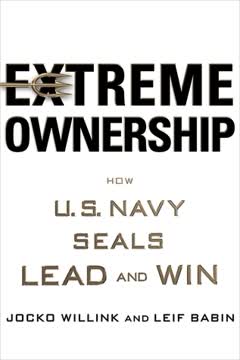
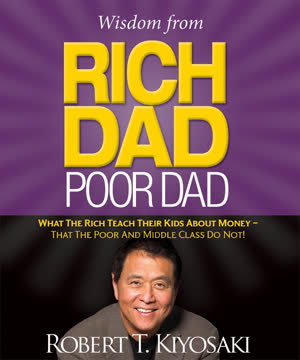
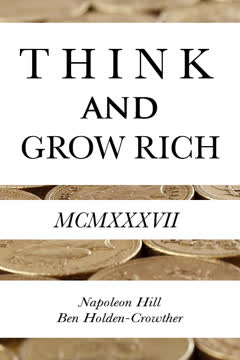

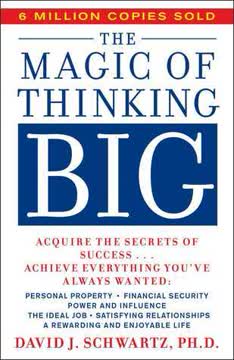
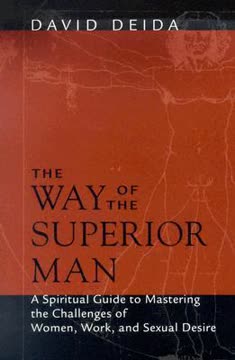
Download PDF
Download EPUB
.epub digital book format is ideal for reading ebooks on phones, tablets, and e-readers.
